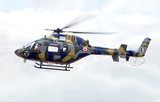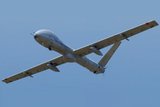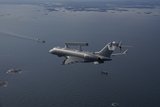Ukraine: an ugly truth
Ukrainian President Volodymyr Zelensky visits Bucha in the aftermath of the Russian withdrawal. (Photo: Ukrainian MoD)
In the last editor’s comment for Shephard's Air Warfare magazine, this writer looked at how Russia would likely approach invading Ukraine by focusing on dismantling C2 infrastructure and relying on land-based equipment to assert control, less so on air power. In reality though, much of what has happened since the invasion began beggars belief and confounds all manner of military analysts’ forecasting. Most depressing are the tragic scenes from Bucha, a town near Kyiv, which are currently being investigated by the International Criminal Court in order for evidence of war crimes to be gathered.
Some experts have not been so
Already have an account? Log in
Want to keep reading this article?
More from Air Warfare
-
![Singapore’s Hermes 900 buy to enhance multi-domain ISR capabilities]()
Singapore’s Hermes 900 buy to enhance multi-domain ISR capabilities
Drawing on its endurance and substantial payload capacity, the Hermes 900 would provide a boost to Singapore’s ISR capabilities, particularly in the maritime domain.
-
![Dubai Airshow 2025: GA-ASI’s MQ-9B racks up new milestones with AEW demo planned]()
Dubai Airshow 2025: GA-ASI’s MQ-9B racks up new milestones with AEW demo planned
The company announced its demonstration timeline while confirming the MQ-9B had completed the platform’s third lifetime test.
-
![European firms express interest in filling NATO airborne early warning replacement needs]()
European firms express interest in filling NATO airborne early warning replacement needs
The comments from both Saab and Airbus on their potential to fulfil the airborne early warning and control requirement come after NATO countries shelved plans to procure six E-7 Wedgetail AEW&C aircraft.






















